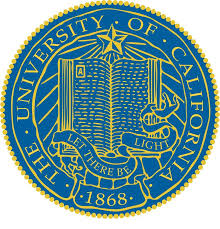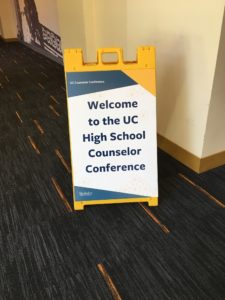 As many of us know, admissions to the University of California system has become increasingly selective over the years, particularly in the past decade. For instance, freshman applications at UC Berkeley have doubled in that time, and all UC campuses have now crossed the threshold of 100,000 for freshman and transfer applications each cycle. Given this situation, after attending the UC Counselor Conference a few weeks ago, Green Ivy wanted to provide some insight in terms of how the these universities make their application decisions and offer a few helpful tips for students who are applying this fall.
As many of us know, admissions to the University of California system has become increasingly selective over the years, particularly in the past decade. For instance, freshman applications at UC Berkeley have doubled in that time, and all UC campuses have now crossed the threshold of 100,000 for freshman and transfer applications each cycle. Given this situation, after attending the UC Counselor Conference a few weeks ago, Green Ivy wanted to provide some insight in terms of how the these universities make their application decisions and offer a few helpful tips for students who are applying this fall.
Meeting the UC admissions requirements isn’t enough to gain an offer of acceptance. Although the  UCs use test scores and GPAs in their decisions, their process is holistic and what’s termed a “comprehensive review”. This means each campus looks at an applicant’s high school environment, academic and personal accomplishments, family environment, and other circumstances all in the context of their opportunity and life experiences.
UCs use test scores and GPAs in their decisions, their process is holistic and what’s termed a “comprehensive review”. This means each campus looks at an applicant’s high school environment, academic and personal accomplishments, family environment, and other circumstances all in the context of their opportunity and life experiences.
Take a deep dive into your major choice and be strategic about it when possible. The UC admissions officers were very forthcoming about the fact that they are flooded with students wanting to major in a STEM field, and that each campus has to distribute its offers over all the disciplines. Since the number of students applying to the arts and humanities is far less, there is a chance those students, depending on their academic profile, might get offers over those applying to computer science or engineering. If you are considering STEM, it’s a great idea to research fields outside of STEM and be open to other possibilities. A good place to start is at the  UC Davis blog called “What Can I Do With My Major”, which offers advice and case studies, and suggests various careers for a wide range of fields, from theater and communications to American studies and pharmaceutical chemistry.
UC Davis blog called “What Can I Do With My Major”, which offers advice and case studies, and suggests various careers for a wide range of fields, from theater and communications to American studies and pharmaceutical chemistry.
Answering the UC Personal Insight Questions: Think interview, not essay. Several years ago, the UCs went from two longer required essays to four short-answer questions, with students given eight options from which to choose. This decision was made in part because the old model and prompts resulted in off-topic answers and didn’t reveal enough about applicants. The PIQs are designed to help students express themselves more specifically in a way that gives context, depth, and clarity to their application—much like an in-person interview. That said, answer the questions directly, with no metaphors, flowery language, or scene setting. As one admissions officer put it: “If I asked you about your proudest moment in an interview, would you respond by reciting a poem?” Point taken.
Each application is fully reviewed at every UC campus you apply to. The UCs respect the work each applicant has put into the process, and each application is looked at by the individual admissions officers at each campus. Although officers can see all the campuses you’ve chosen, they make their offers of acceptance entirely independently of one another, and they don’t share admissions offers or rejections across the system.

Counting on the waitlist might not be the best idea. Using a large waitlist is a relatively new device within the UC system, as the state used to compensate the campuses with funds if they over enrolled. Now that state funds are limited and the university system is at capacity, not to mention scandals like UC Irvine rescinding acceptance offers in 2017, they strive to inch up to enrollment goals but not exceed them. The result? Some campuses may place 6,000–8,000 students on their waitlists each year.
